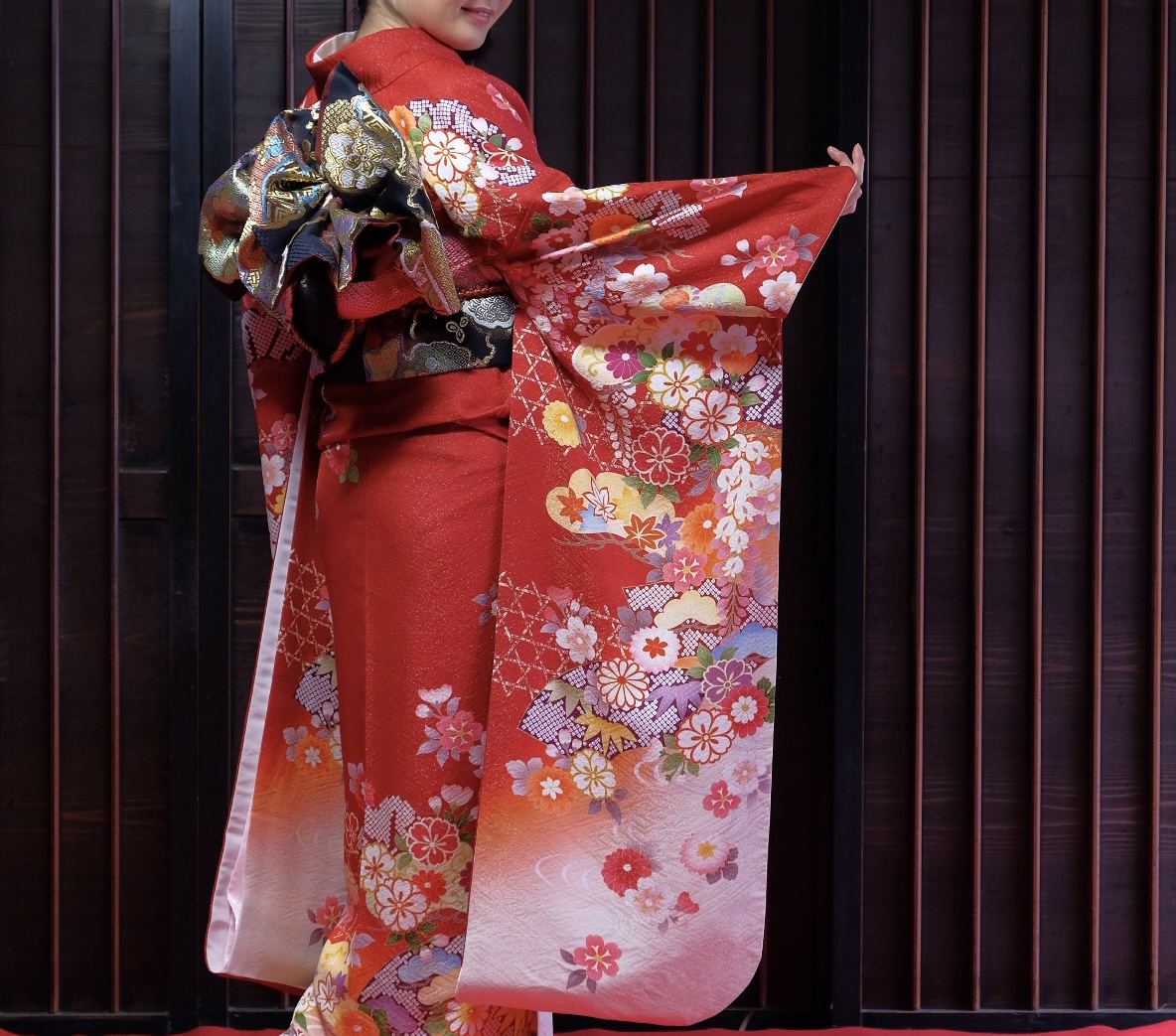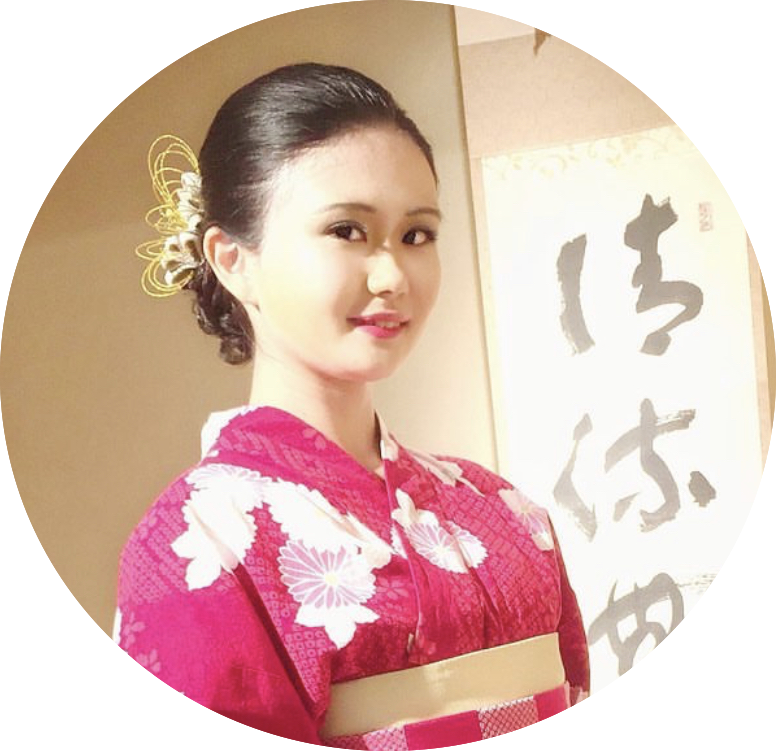 by
Lina Japanese Writer/Translator
by
Lina Japanese Writer/Translator
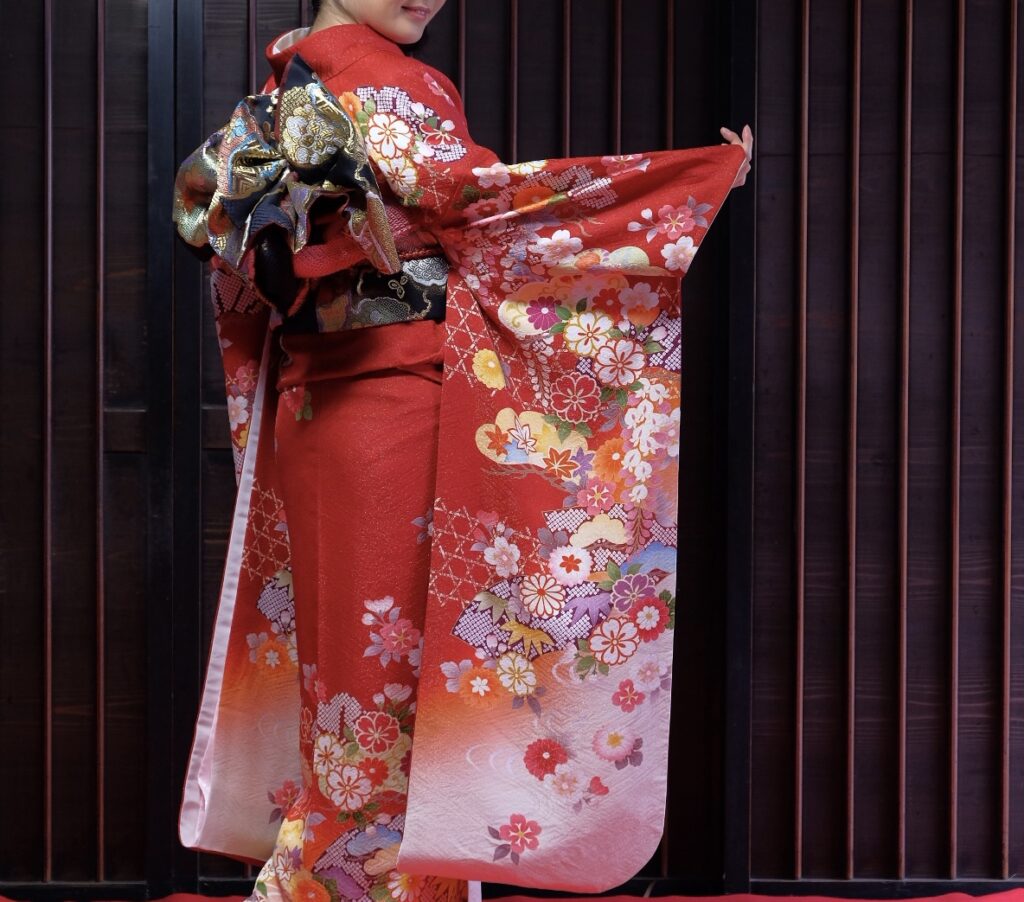
Nihon-buyō (日本舞踊) literally translates to ‘Japanese dance’. When I mention, “I practise Nihon-buyō”, some enquire, “What kind of Japanese dance do you perform?” To which I proudly respond, “I don’t just perform a Japanese dance; I perform the Japanese dance.”
This exchange highlights how traditional Japanese dance remains relatively unknown globally, despite its solemnity, elegance and magnificence.
General terms often evolve into specific identifiers. Consider the Ainu, the indigenous people of the northern regions of Japan. In the Ainu language, “Ainu” simply means “people.” However, upon their encounter with the southern Japanese tribe, this generic term transformed into a specific name for their tribe. Interestingly, the terms ‘Maori’ in New Zealand and ‘Inuit’ in North America, both indigenous to their respective regions, also mean “people” in their native languages.
Similarly, what was once broadly referred to as the “Japanese dance” has, over time, come to denote a specific style of traditional Japanese dance, known as Nihon-buyō.
If I were to say “I practise Nihon-buyō” in Japanese to a native speaker, there would be no confusion. They’d instantly recognise it as the definitive Japanese dance. It’s akin to not questioning, “What kind of flamenco do you perform?” or “What type of samba do you dance to?” Admittedly, there might be various styles of Flamenco and Samba, just as there are in Nihon-buyō.
Here I’d like to introduce you to the world of Nihon-buyō: a traditional Japanese dance with a rich 300-year history.
4 Features that Define Nihon-buyō
The first question many ask is: What exactly is Nihon-buyō? Japan boasts a plethora of traditional and indigenous dances. While many of them can be challenging to differentiate, Nihon-buyō stands out distinctly.
1. Traditional dressing
Nihon-buyō is characterised by several features, with one of the most prominent being the use of traditional Japanese attire. While kimonos are a well-known traditional Japanese garment, there are many others. For instance, if portraying a peasant, a dancer might don attire resembling that of a farmer rather than the lavish robes of a princess. This leads us to the second feature: acting.
2. Acting
Nihon-buyō dancers often take on specific roles, ranging from farmers, samurai, and monks to animals, mythical creatures, ghosts, and elegant ladies. The costume varies depending on the role, but it always adheres to a traditional theme. This is reminiscent of ballet or other theatrical dance performances.
However, there are nuances. A dancer’s role can shift within a single performance. Sometimes, this transformation is evident through a change in costume or props. Yet, at other times, even while wearing the same attire, dancers might portray multiple characters. For example, in the solo dance “Kinoenemachi (甲子待)”, a single dancer embodies all seven Lucky Gods.
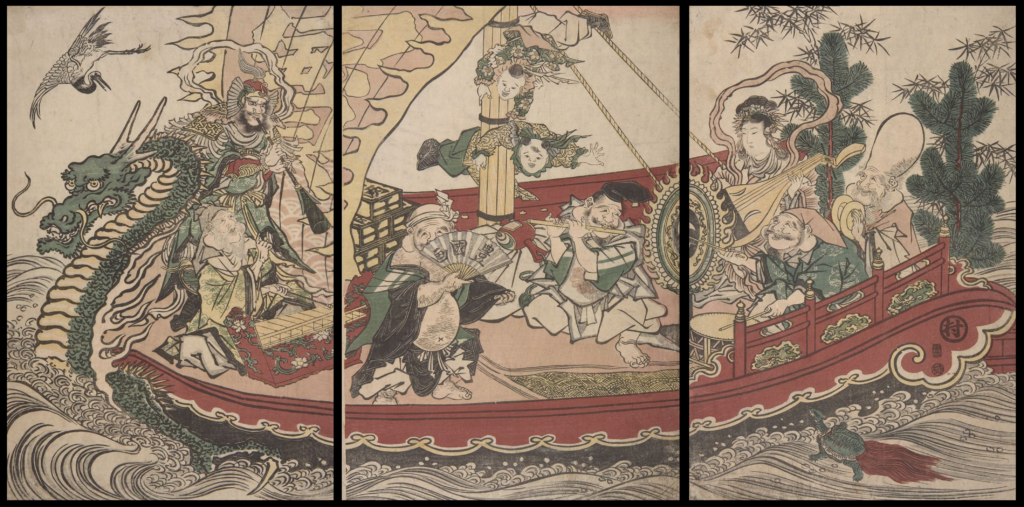
While some performances lack specific settings or roles, making the dancers themselves the ‘main characters’, the choreography often still tells a story.
3. Tachi-yaku and Onna-gata
If one were to categorise Nihon-buyō, it would predominantly fall into two styles: Tachi-yaku (立ち役) and Onna-gata (女形).
Tachi-yaku features masculine choreography, suited for roles where the dancer portrays a male character. In contrast, Onna-gata is feminine, with dancers embodying female roles.
Even a dancer’s stance can hint at the style they’re about to perform. For instance, in Tachi-yaku, dancers adopt a bow-legged stance reminiscent of ballet, while Onna-gata requires a pigeon-toed position.
Interestingly, a dancer’s gender doesn’t dictate the style they perform. Male dancers can embrace Onna-gata, and vice versa. Proficient dancers are often adept at both styles. While dancers might have a preferred style or be stronger in one, mastering both is essential to be regarded as a skilled performer.
A perfect illustration of this versatility is seen in the dance “Kinoenemachi”. In this performance, a dancer embodies all Seven Lucky Gods, which includes six male deities and one female deity. This requires the dancer to transition seamlessly between the Tachi-yaku and Onna-gata styles within a single performance, showcasing the depth and adaptability inherent in Nihon-buyō.
4. Dance for others
Typically, Nihon-buyō is performed on stage, much like ballet. Just as you wouldn’t expect to see ballerinas performing on the streets, the same holds for Nihon-buyō. While other traditional dances might be showcased in public spaces like streets or parks, Nihon-buyō is primarily an exhibition for an audience.
However, unlike ballet, Nihon-buyō isn’t strictly a stage dance. It can be performed in private settings when appropriate. For instance, Geisha, traditional female entertainers, dance to entertain their customers. Their performances, too, fall under the Nihon-buyō umbrella.
Elements of choreography – Odori, Mai and Shosa
The choreography of Nihon-Buyō is underpinned by three fundamental elements: Odori (踊り), Mai (舞), and Shosa (所作). These terms, deeply rooted in the Japanese language and culture, resist direct translation into English, and even native Japanese speakers might grapple with articulating their precise meanings.
While a cursory glance at a Japanese dictionary might translate both Odori and Mai as ‘dance’, they represent distinct aspects of movement in the context of Nihon-Buyō.
Odori is choreography that emphasises rhythmic jumping movements, with a focus on coordinated hand and foot actions. In contrast, Mai is characterised by more circular, flowing movements, often accompanied by singing and music. A hallmark of Mai is the dancer’s technique of walking with the soles of their feet fully in contact with the ground.
Shosa presents a more elusive concept. To encapsulate Shosa is to describe the refined, deliberate movements of an individual exuding integrity and dignity.
While dictionary definitions might offer translations like ‘behaviour’ or ‘movement’, Shosa embodies a deeper cultural significance in Japanese. Although a familiar term to native speakers, it’s not commonly employed in daily conversation, with the Japanese language offering other words for more general use.
Observing the movements of professional Nihon-Buyō dancers offers a glimpse into this historically esteemed and refined art form.
Props
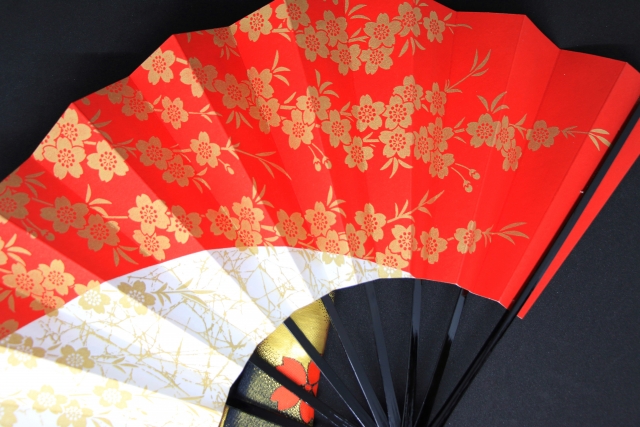
In Nihon-buyō, props aren’t merely ornamental; they play a pivotal role in the dance, adding layers of meaning, depth, and visual appeal. Among the various props employed, one of the most iconic is the traditional fan known as ōgi (扇).
The ōgi is not just an accessory or a decorative item. In the hands of a skilled dancer, it transforms, much like a magic wand, altering the narrative, mood, and even the very space in which the dance unfolds. The fan can represent a myriad of things: a gentle breeze, the flowing of a river, or even the fluttering of a bird. Its versatile nature allows it to seamlessly integrate into the story being portrayed, making it an indispensable tool in the Nihon-buyō repertoire.
Music bands and singers, and stage settings
When Nihon-buyō is performed formally, dance always comes with music bands and singers.
The main instruments are a three-stringed instrument called Shamisen and flute called Shakuhachi, and drums called Taiko. They are like broadway theatre shows; live music in front of the audience. Nihon-buyō is traditional, and when the tradition started 300 years ago, there was no recorder. As I mention later, Nihon-buyō tries keeping the tradition alive, and this is one aspect.
The difference from Broadway is that in Broadway shows we don’t really see the faces of orchestra members as they are playing instruments in hidden spaces under the stage, but in Nihon-buyō you see them play the traditional instruments on the side or back of dancers on stage.
There are 100 or more Nihon-buyō songs, but the major ones are about 30 songs. Depending on the song, the scene is different, and most notable theatres have the settings for particular songs. The music band and setting must change depending on the song, so in Nihon-buyō shows, there are at least 10 minutes intervals between each song to alter the music band and setting.
Ryū: The Continuity from Founder to Present Generation
A distinctive feature of traditional Japanese arts, including Nihon-buyō, is the Ryū (流) system. This system ensures the transmission of skills and styles from one generation to the next.
When researching renowned Japanese Karate practitioners or traditional painters, one might notice the recurrence of certain surnames. Take, for example, the world of Ukiyoe painting. Many might be familiar with Utagawa Hiroshige, one of the most celebrated figures in this art form. However, the Utagawa surname is not unique to him. Other notable Ukiyoe painters, such as Utagawa Toyokuni, Utagawa Kuniyoshi, and Utagawa Kunimasa, share this surname. It’s essential to understand that these artists aren’t necessarily connected by blood or legal relationships. Instead, the surname ‘Utagawa’ signifies their affiliation to a specific Ryū-ha, indicating a collective style or technique within their artistic community.
When embarking on traditional Japanese dance lessons, the instruction you receive will be rooted in the choreography and style of the Ryū to which your teacher belongs. Interestingly, if you were to learn the same dance from a teacher of a different Ryū, you’d find variations in choreography and even the overall ambiance of the dance.
Within the realm of Nihon-buyō’s Ryū, five major schools stand out among the hundred or so that exist: Hanayagi, Nishikawa, Bando, Fujima, and Wakayagi. Teachers affiliated with, say, the Bando school, will have artistic names prefixed by “Bando”. Thus, simply by knowing your teacher’s name, you can discern the dance style you’re being taught.
Earning an artistic name from the head of a Ryū-ha is a significant achievement. It signifies that a dancer has reached a level of proficiency that upholds the reputation of the Ryū-ha. Often, this involves rigorous assessments, such as performing in front of the head and other esteemed members. Once bestowed with an artistic name, a dancer becomes an integral part of the ‘clan’, forging a lifelong bond.
The essence of Ryū is the faithful transmission of style and choreography, as envisioned by the founder, without any deviations. Many Ryū boast a lineage spanning decades, with some even tracing back over a century. Contemporary Nihon-buyō dancers are custodians of this legacy, striving to preserve the original choreography and skills.
Drawing a parallel with biology, the Ryū system can be likened to evolution. Just as DNA replicates by producing exact copies, ensuring the passage of genes through generations, so does Ryū with its choreography.
However, just as unintentional mutations or the extinction of certain groups can alter species over time, so can the nuances of Ryū evolve. Each Ryū represents a unique branch on the evolutionary tree, with choreography symbolising its genetic code. Only those that continually captivate audiences endure the test of ‘natural selection’. Ryū that fail to engage or aren’t zealously passed down fade into obscurity. Those that persist today are the ones that have withstood the test of time.
Tradition and the New Wave
At its core, Nihon-buyō is about preserving the tradition, majesty, and splendour as envisioned by the founder of each Ryū-ha. As previously mentioned, there are around 100 songs integral to Nihon-buyō, but traditionally, there’s no room for new songs or choreography.
However, the world of Nihon-buyō isn’t without its innovators. Some dancers, driven by a desire to experiment, depart from their original Ryū to establish their own, thus becoming founders themselves. In other instances, dancers, having committed some indiscretion, find themselves expelled from their Ryū. Left with little choice, they embark on creating their own Ryū. Such circumstances have given birth to new Ryū, facilitating the evolution of the dance.
Certain Ryū are more progressive, permitting the creation of new choreography for traditional songs or even the introduction of entirely new songs. This avant-garde form of Nihon-buyō is termed Shin-buyō (新舞踊), translating to ‘new dance’. Embracing modernity, Shin-buyō dancers perform contemporary or popular songs, albeit in the traditional Nihon-buyō style.
While anyone can aspire to establish a Ryū, the journey is arduous. A founder typically needs to be a renowned dancer with a substantial following of apprentices. If the founder’s prowess isn’t compelling enough to inspire apprentices to adopt the Ryū’s name as their artistic surname – a significant part of a Nihon-buyō dancer’s identity – the Ryū risks fading away within a generation.
Modern times have seen Nihon-buyō’s appeal wane among the youth. Ballet and hip-hop have surged in popularity as extracurricular activities, overshadowing traditional arts like Nihon-buyō. One reason for this shift could be the stringent discipline associated with traditional arts. Additionally, the rigid rules of Nihon-buyō and the obscurity of its songs, even among older Japanese generations, can make it seem inaccessible and unappealing.
For novices, Shin-buyō offers a more approachable entry point, resonating more with contemporary sensibilities. Audiences too find Shin-buyō performances more engaging, given the familiarity of the songs.
The Enduring Power of Tradition
With the emergence of Shin-buyō, traditional Ryū-ha began to be categorised as Koten (古典), which translates to ‘classic’. The five major Ryū all fall under this classic category more or less.
While Shin-buyō may initially seem more accessible and relatable, it’s noteworthy that the majority of esteemed Nihon-buyō dancers are affiliated with one of the main five Ryū. Numerous new Ryū have emerged over time, yet none have managed to rival the influence of the traditional schools, at least not yet.
The strength of tradition is undeniable. Consider the act of gifting flowers or dining at an upscale restaurant to make a loved one feel special. Such gestures might be deemed clichéd, but clichés become clichés because they resonate and are effective.
This principle holds true for Nihon-buyō. While novel approaches might initially captivate audiences with their freshness, the allure of novelty can wane over time. Without a deeper essence beyond mere innovation, it’s challenging to sustain interest solely on the premise of being ‘new’.
Tradition might be perceived as conservative or even mundane. However, there’s an inherent majesty and grandeur in practices that have stood the test of time to become traditions. Just as species evolve over generations, never remaining exact replicas of their ancestors, so too does traditional Japanese dance. It’s a living art form, continually adapting while retaining its core essence.

